Following Sheffield United’s lacklustre start to life back in the Premier League, the club parted ways with Paul Heckingbottom and re-hired Chris Wilder, a hugely popular figure at Bramall Lane. With the campaign almost at the halfway point, time is of the essence if Wilder is to transform his beloved Sheffield United and guide them to Premier League safety.
The Blades have the league’s worst records for both goals scored and conceded at the time of writing, so Wilder has a gargantuan task ahead of him to turn fortunes around. However, his arrival has already served as a breath of fresh air, with United showing signs of life in his three games in charge so far, including a well-earned victory against Brentford. Wilder’s other two games so far were both defeats at the hands of Liverpool and Chelsea.
This tactical analysis will look to highlight two key areas that they could improve to bolster their performance but with different angles for the two areas. The first area of analysis will look at a consistent problem area for the Blades, the issue itself, and potential solutions. The problem area in question that we will discuss is their struggle to defend in central areas of midfield. The second analysis segment will focus on a critical aspect of United’s tactics – their direct nature on the ball: we look at how they can tweak things to get the most out of this approach to be more effective in possession. Finally, we will wrap this analysis up by looking at some transfer suggestions relating to the aforementioned two key areas.
Defending areas in central midfield
Of course, there are multiple areas in which the Blades need to sharpen their performance, which is why they find themselves in a relegation battle as the January transfer window approaches, but this analysis will isolate one area that is causing them serious problems – their defensive work in central midfield areas. While this may sound like a specific and somewhat small detail, it is a vital detail that the Blades have got wrong throughout the season and has gifted goalscoring opportunities to the opposition.
Positioning as a unit in midfield has been an error for Sheffield United this season, and they have conceded many chances and goals because of it. This negative consistency could be down to several things; however, individual quality/tactical understanding and/or lack of formation consistency definitely play a part. 3-5-2 has been the most frequently used, appearing 25% of the time in the EPL this season – 5-3-2 being used 14% of the time, 3-4-3 11%, 4-4-2 10% and a cluster of other shapes along the way. This pattern has continued in Wilder’s reign so far, having used 4-1-4-1 vs Chelsea, 4-2-3-1 vs Brentford, and 4-3-3 vs Liverpool.
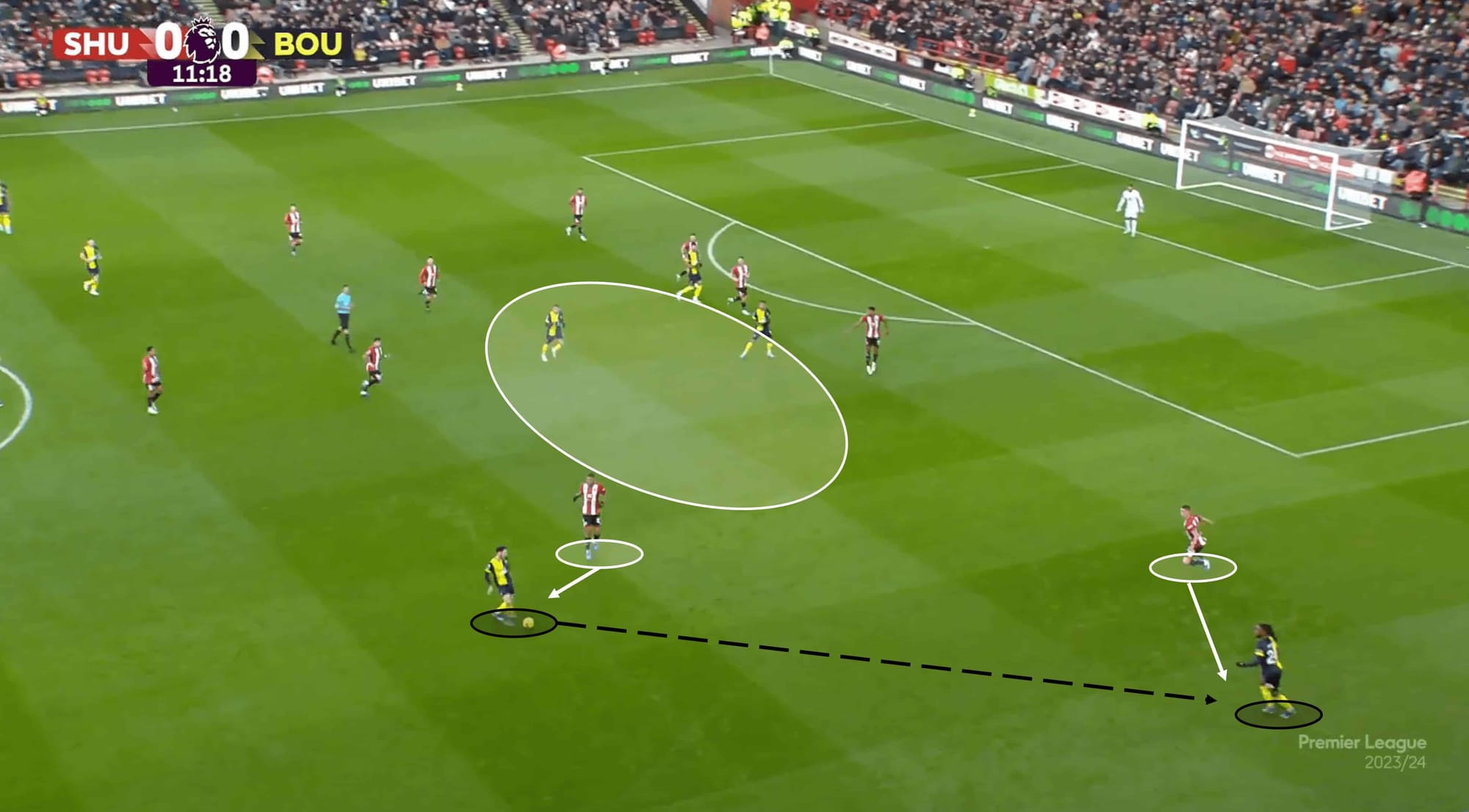
This first example shows the problem in a really obvious way. While the Blades have a decent backline shape, the midfield is, simply put, all over the place. The player pressing (Vinicius Souza) the Bournemouth man on the ball may appear to be doing the right thing, but what you can’t see in this image is the lack of urgency and intensity required in this moment. He should either stay in a deeper position alongside Oliver Norwood or show a higher urgency in pressing the ball. Instead, his indecisiveness allows the pass out to the wide man.
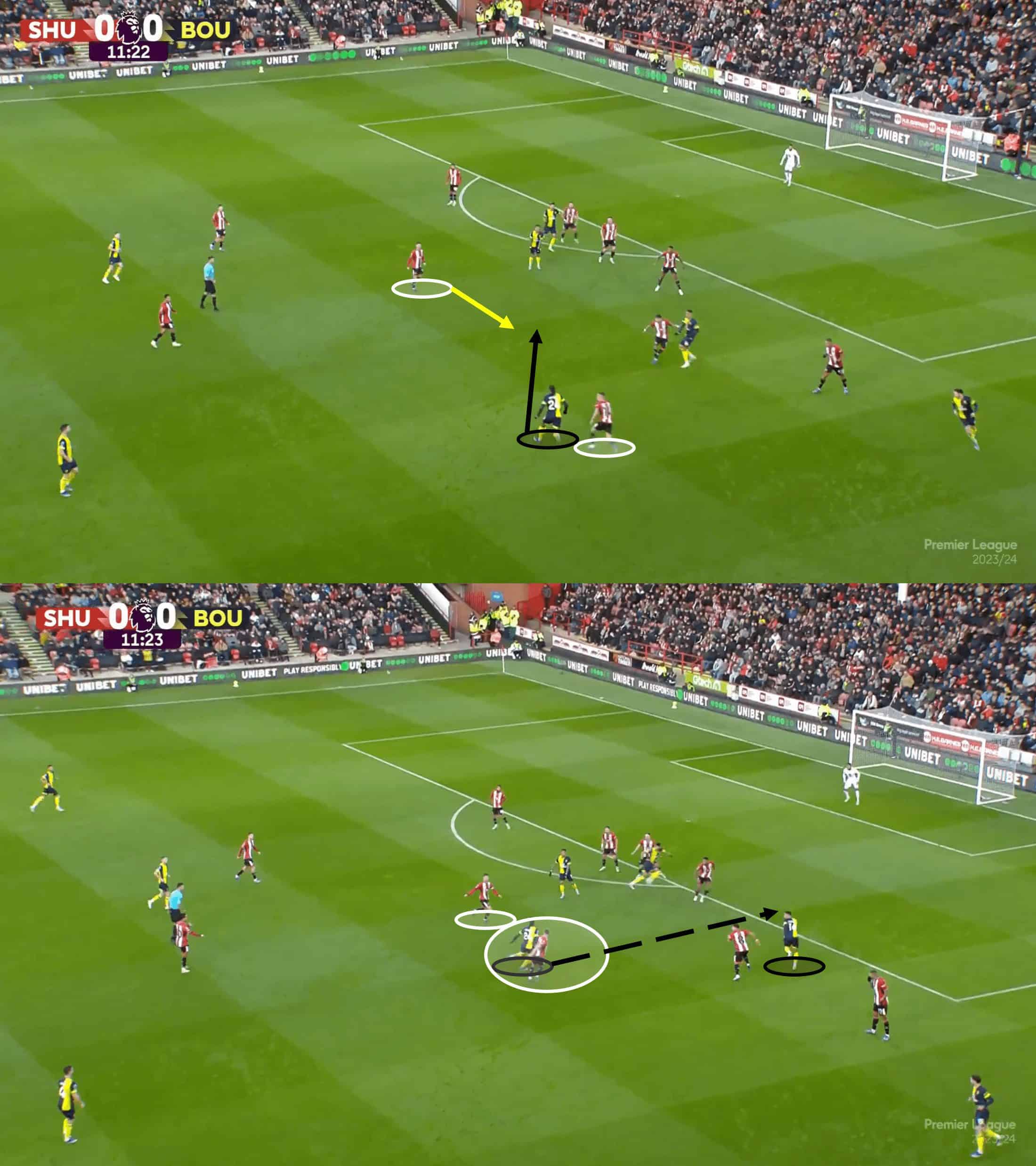
The Bournemouth wide player must have also spotted Sheffield United’s mistake as he collected the ball and opted to drive right into the vacated space. At this point, his attacking teammate makes a well-timed run through the Blades’ backline – Norwood looked to close the ball down but was simply too late in shifting across and doing so.
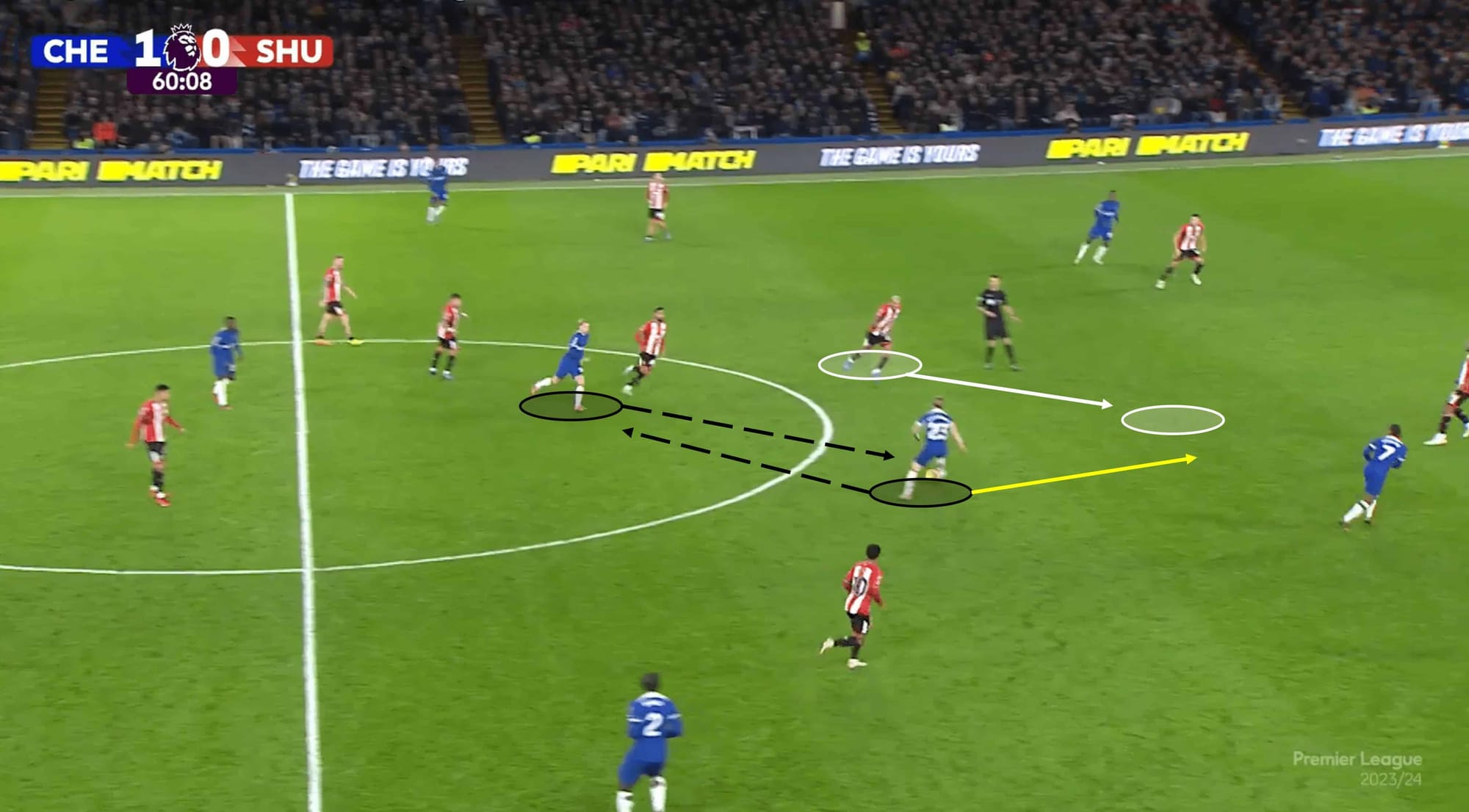
Another example of the same issue, but in a different area and situation here. And no, this was not amid a transition in Chelsea’s favour, but the Blues were quick to recognise the space left in that central midfield area by their opponents, with Connor Gallagher linking up with Mykhailo Mudryk before the Ukrainian fired a pass forward into Cole Palmer in an advanced position.
Not only were Chelsea afforded the licence to play a free-flowing combination in a key area on the pitch, but Sheffield United’s recovery was poor. The highlighted Blades player only had to readjust his position and shift into a more central area to plug that gap – Gallagher could have driven forward with the ball himself if he wanted to. Of course, Souza is not entirely to blame – just look at the positioning of his teammates higher up than him!
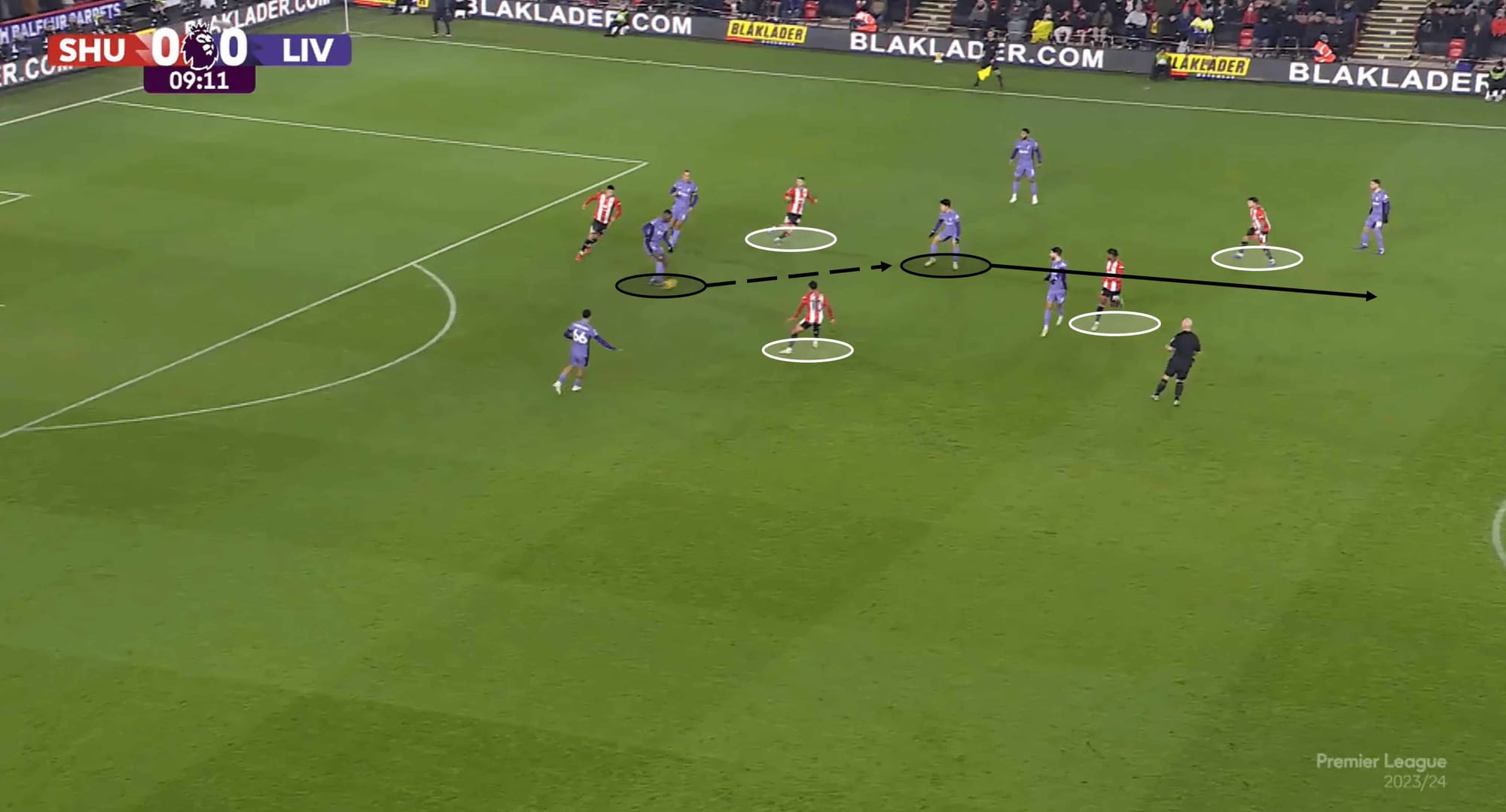
Their struggle with defending centrally has also been present in transitions higher up the pitch, like this example at home to Liverpool. The Reds had regained possession from the Blades, with Wilder’s men in the shot opting not to drop and regroup but instead remain in position, suggestive of a counterpressing approach. What followed, though, was not a productive counterpress.
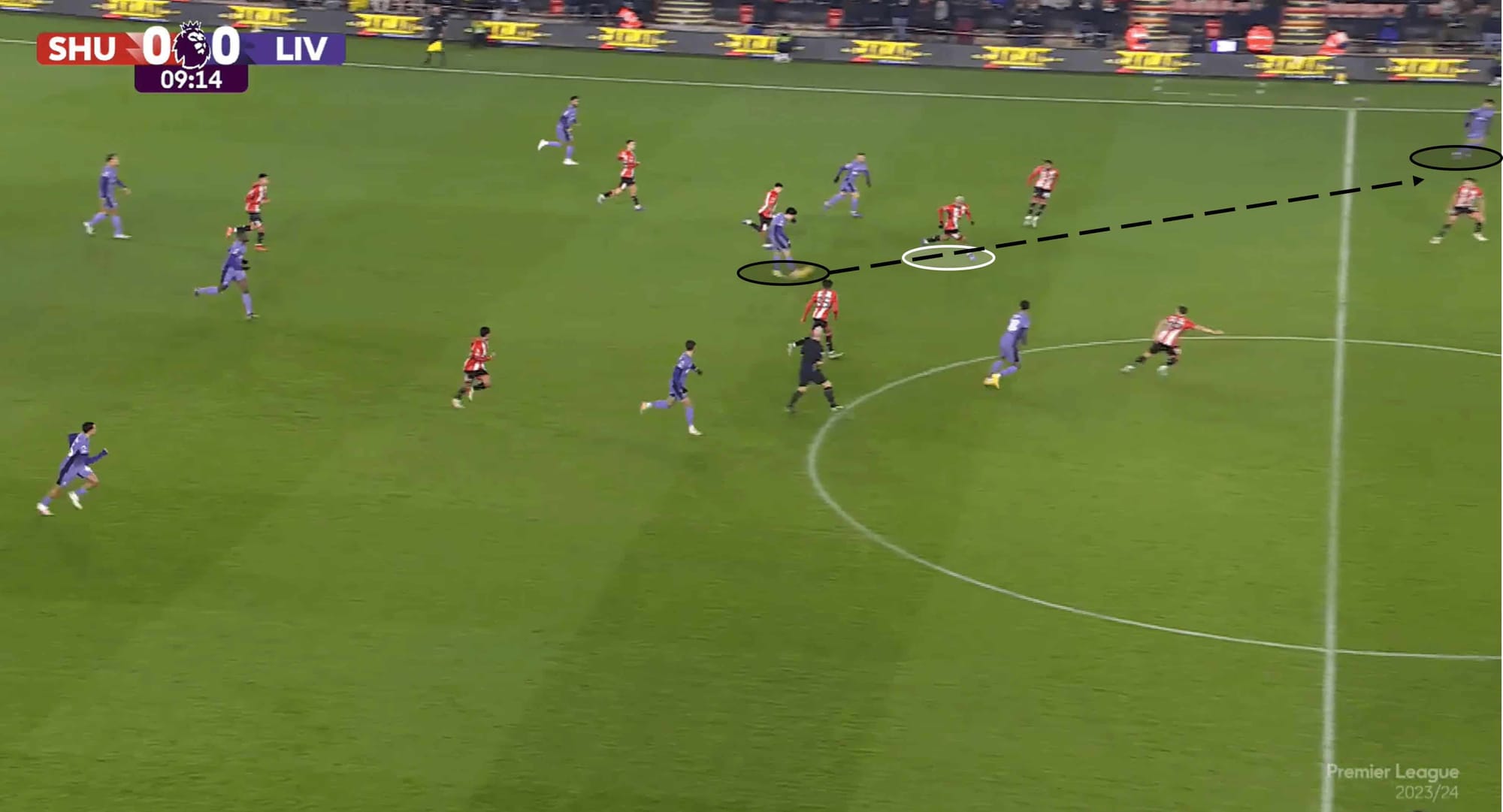
The shot above shows Wataru Endō receiving the ball surrounded by red and white shirts, but no pressure is applied to him, and he is somehow allowed to escape what could have been a moment of intense pressure and dribbles his way out of danger. Souza is questionable again after Endō had run through Sheffield United’s initial press – he again shows reluctance in his closing down and ends up retreating, inviting Endō the space to play a dangerous ball forward.
Knowing when to be direct
Wholesale changes in terms of tactical direction are highly unlikely midway through the campaign. Sure, Wilder will look to reintroduce his tactical philosophy on some level, but his main focus will go into getting the best out of individual players and helping the team improve on and lean into their current strengths. Direct football is the go-to style of play at Sheffield United this season, so veering away from that is incredibly doubtful for numerous underlying reasons. Long passing is already a heavy feature of their tactics, making 42.33 long passes per 90 – the third-highest rate in the EPL. However, they have the second-lowest accuracy rate when it comes to long passing, so they need to learn to adjust and know when the right time for direct passing is.
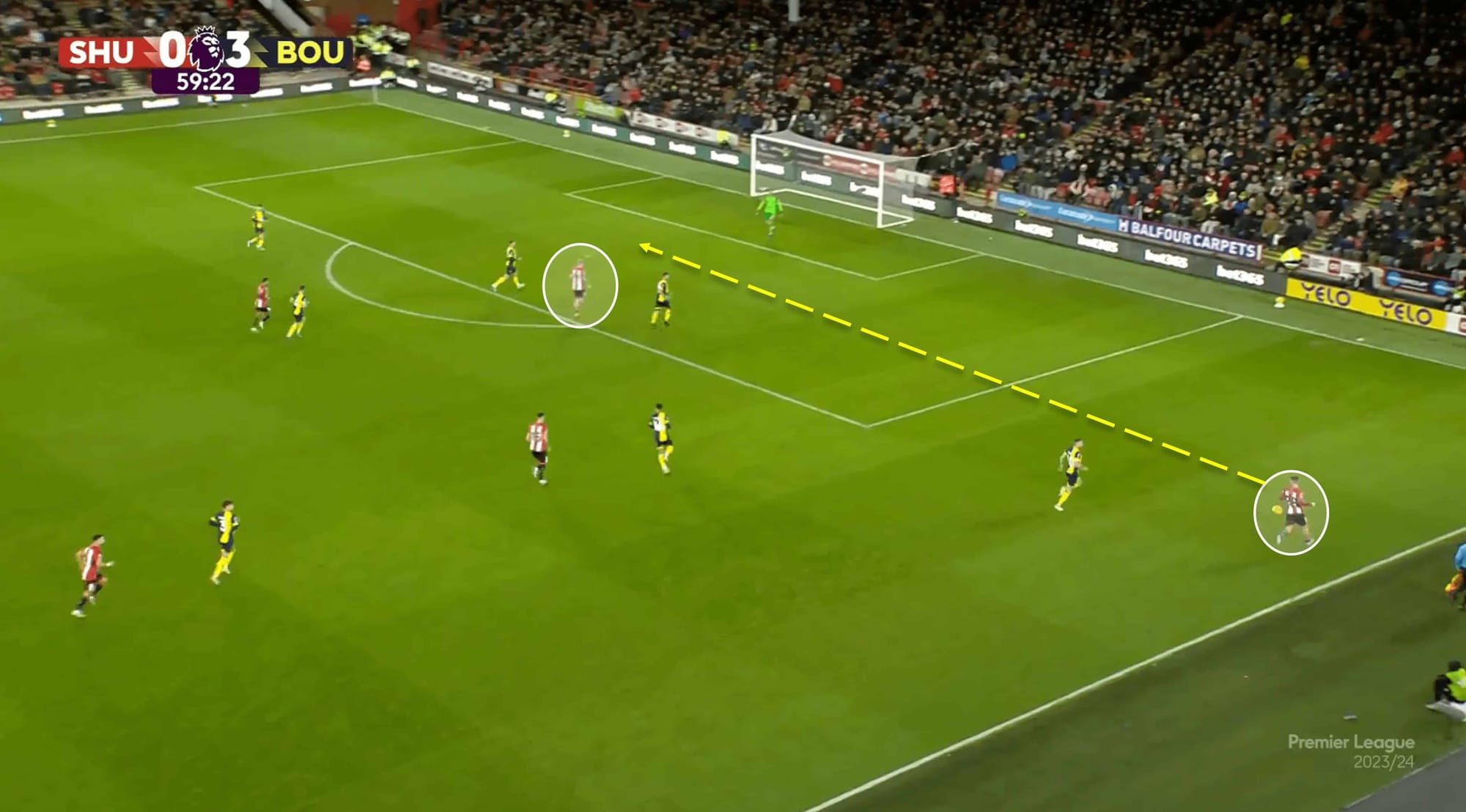
This first example strays from the path in terms of looking at long passing but highlights a key point that also ties into one of the suggested transfer targets later on. The blades have the ball on the right flank, with Norwood, who has the technical ability to whip a cross in towards Oli McBurnie, while there are only two opposition defenders present in the box. However, the midfielder fancies his chances at cutting inside and running at the full-back – this only forced possession backwards.
Sometimes, in football, you have to be prepared to take risks in attack, especially when you’re fighting for your life in the Premier League and have the worst goal tally in the league, and possession does not come by all that often. There could be a case to defend the decision not to deliver the cross, though, which relates to McBurnie’s movement, or lack thereof. While he looks like he’s in a good position between the two centre-backs, he shows nothing in the way of body language that indicates he wants the cross, no movement.
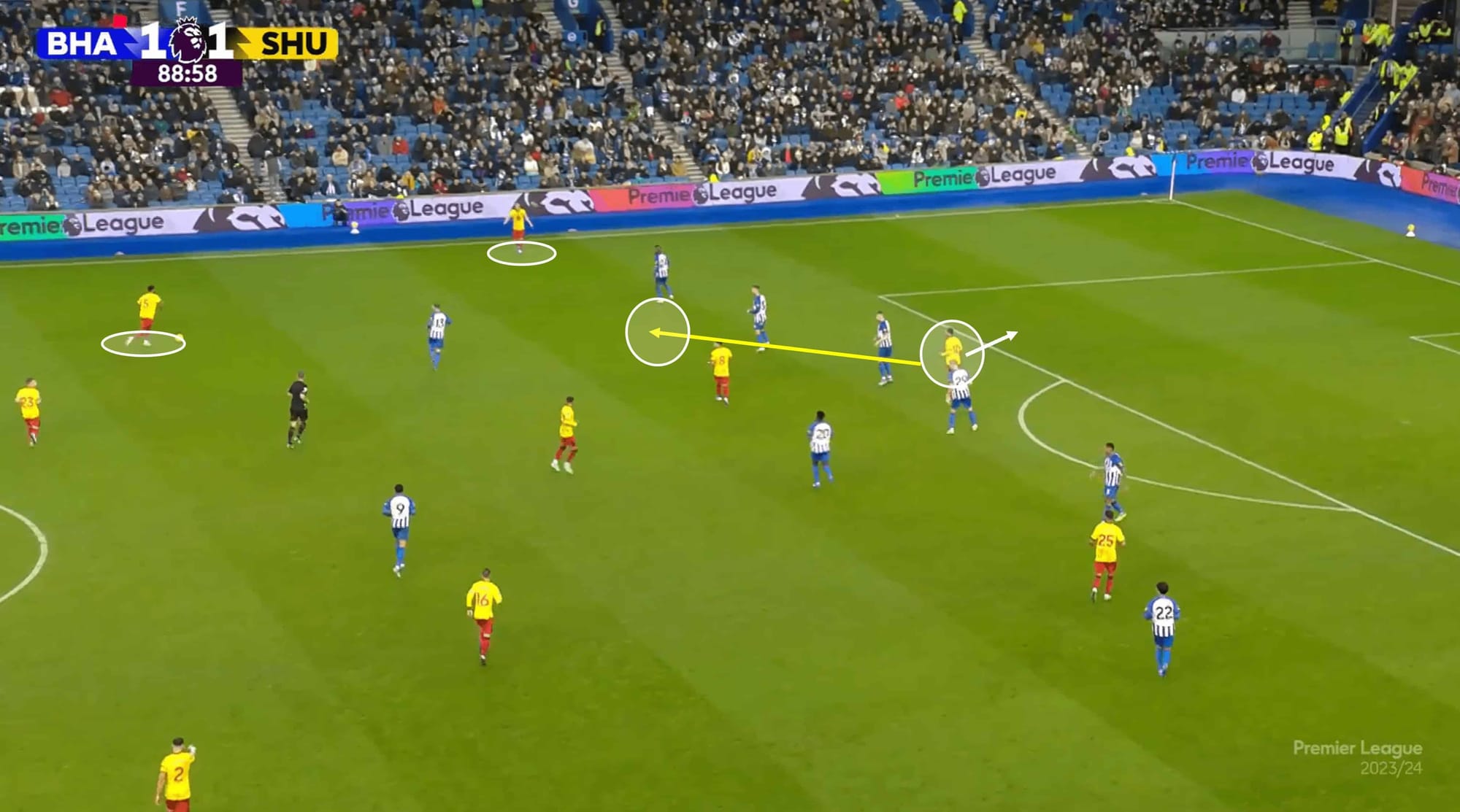
Cameron Archer has been Sheffield United’s most influential attacking player this season, with the former Aston Villa man showing moments of quality in several positions. However, he does not offer the aggression and physicality that his team sometimes need, and while McBurnie brings something of a physical presence, his effectiveness at this level can be questioned. Archer’s instinctual style sees him looking to sit on the shoulder of the last defender and get in behind, but given how many attacking possession phases his team gets (in comparison to the rest of the league), this will often lower the odds of creating a goalscoring chance (from where they have the ball in this example).
Instead, Archer could drop into the highlighted space and offer himself as a link in build-up as his team look to build down the flank before putting a cross in – an area they must build on as their crossing rates are drastically low. The Blades make 6.73 crosses per 90, the weakest in the EPL by some way, but they do have the third-highest accuracy rate, suggesting that their wide players do have crossing quality in the rare moments they showcase it.
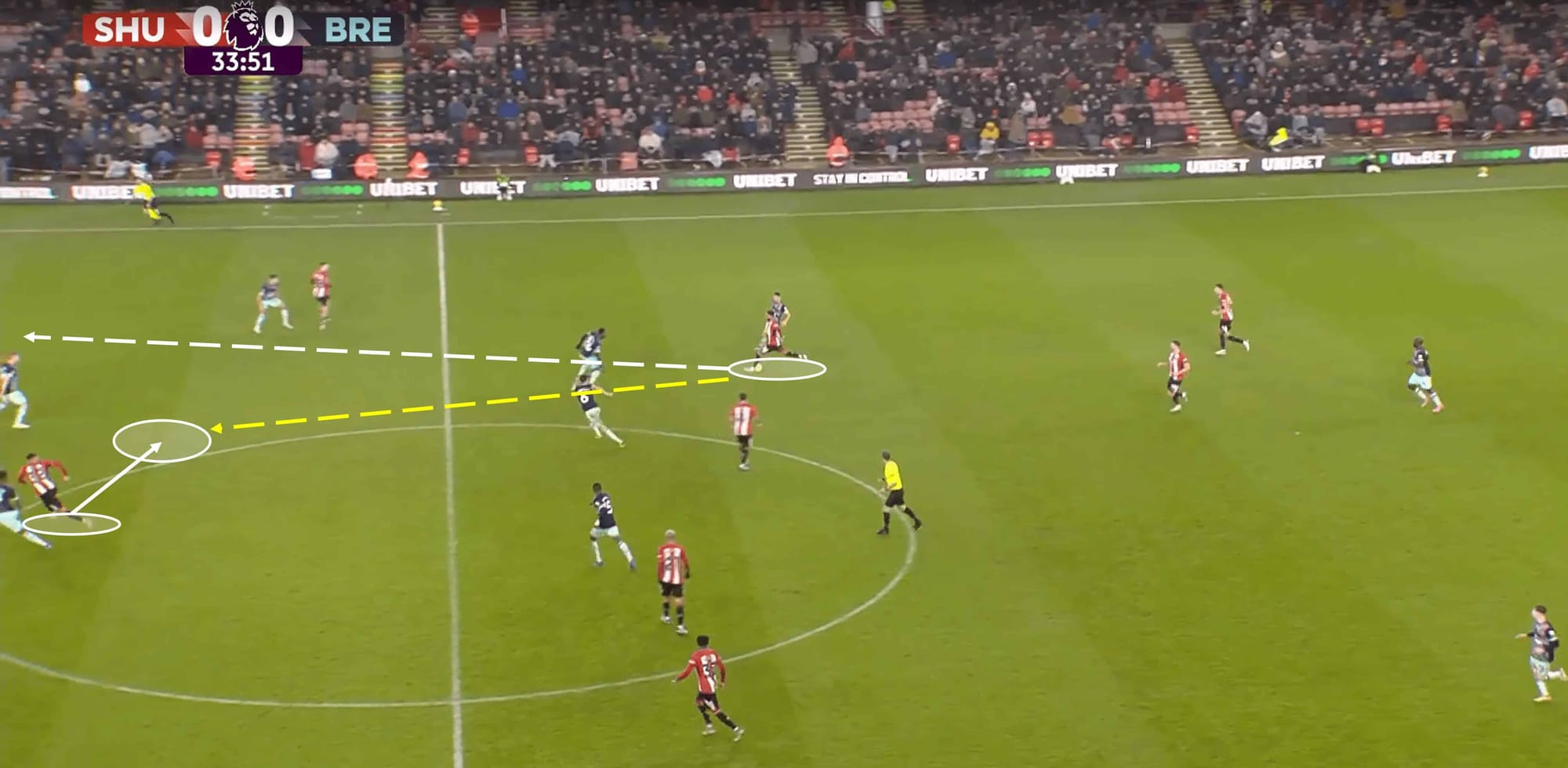
This is another example of knowing when to play those low-percentage passes, and this may look like a good time to unleash the ball in behind, but United forward Will Osula will never get ahead of the two Brentford CBs. Osula does bring a good physical presence to proceedings and shows good technical potential. Still, he is young and inexperienced, and his overall performance reflects that – in time, he could be a significant player at Bramall Lane.
In this instance, Sheffield United seem to get caught up in the adrenaline of a transition and try to force the Hollywood ball, when instead, Osula would have made a better impact by dropping in a few yards deeper to receive the ball where he either carries the ball forward, unleashes the pass to a fellow runner, or pins the defender and holds the ball up while awaiting midfield support, allowing his team to get higher up the pitch and have a controlled possession phase.
Who does Wilder sign?
We have highlighted two areas for the Blades to improve; it is only fair that we make some suggestions regarding which players they could sign to help fix those areas and increase quality within the squad. Here, we look at two defensive midfield options as ando options up top. We have used Wyscout data to highlight the first player mentioned in each position – helping us find the most robust possible option within the limitations that the Blades have in terms of finances and positional needs while using our player similarity tool XGOLD to find similar players to that first player.
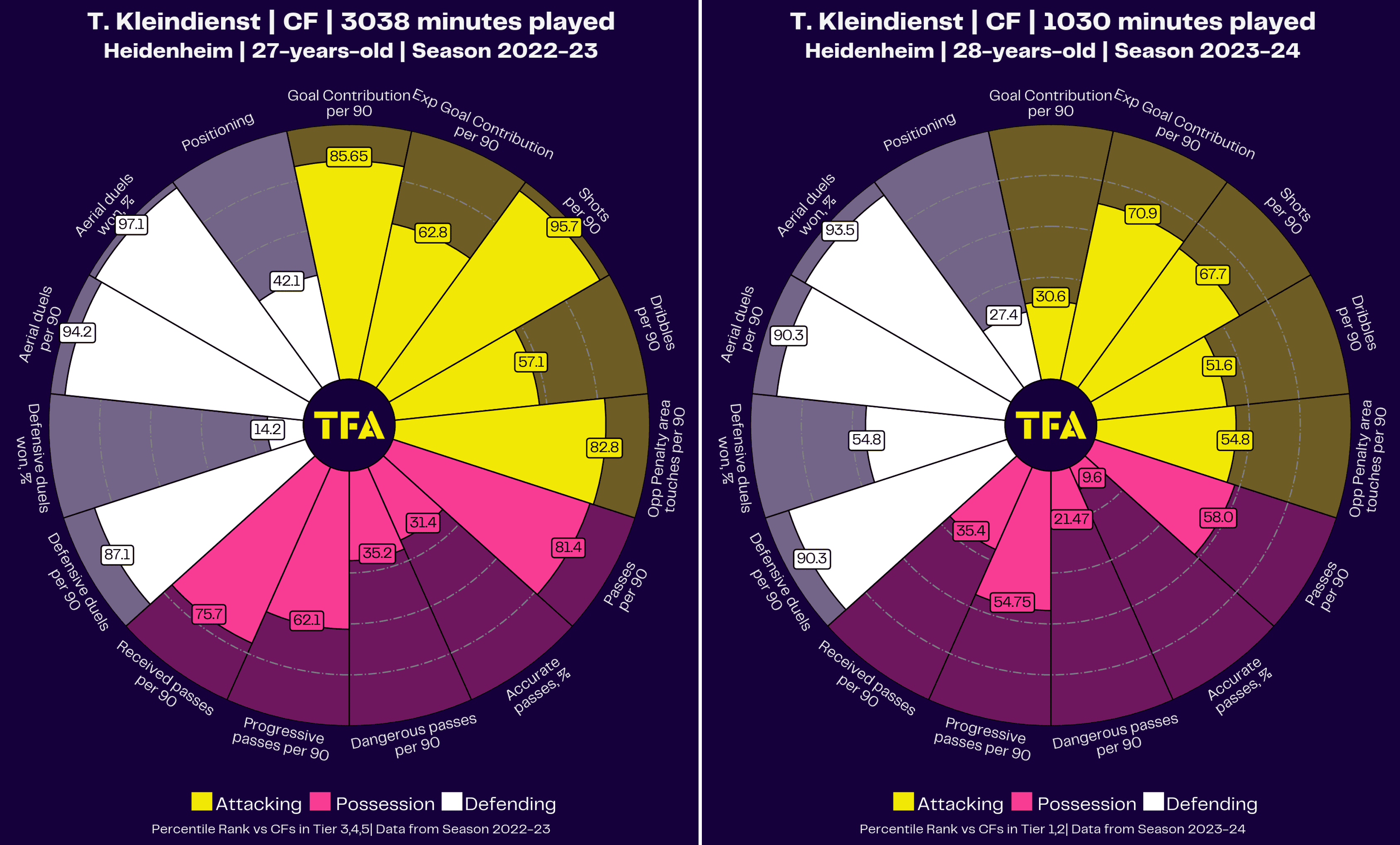
The aim of identifying a striker was to find one with a physical and aerial ability to help Sheffield United take advantage of their direct tendencies, encouraging them to use crosses more often. Heidenheim striker Tim Kleindienst offers one of the best aerial duel engagement & success rates from a CF playing in Europe’s top five leagues, so he was selected as our primary target up top.
As you can see, both this season and last campaign, he brings a serious aerial threat while also doing his fair share of defensive work. His goal contribution last season was also a big plus, and although he hasn’t quite reached the same heights in the Bundesliga (five goals in 15 games), he would certainly show the Blades that aggression and physicality in the final third, standing at 6 ft 3. Currently, he is valued at £4.3m.
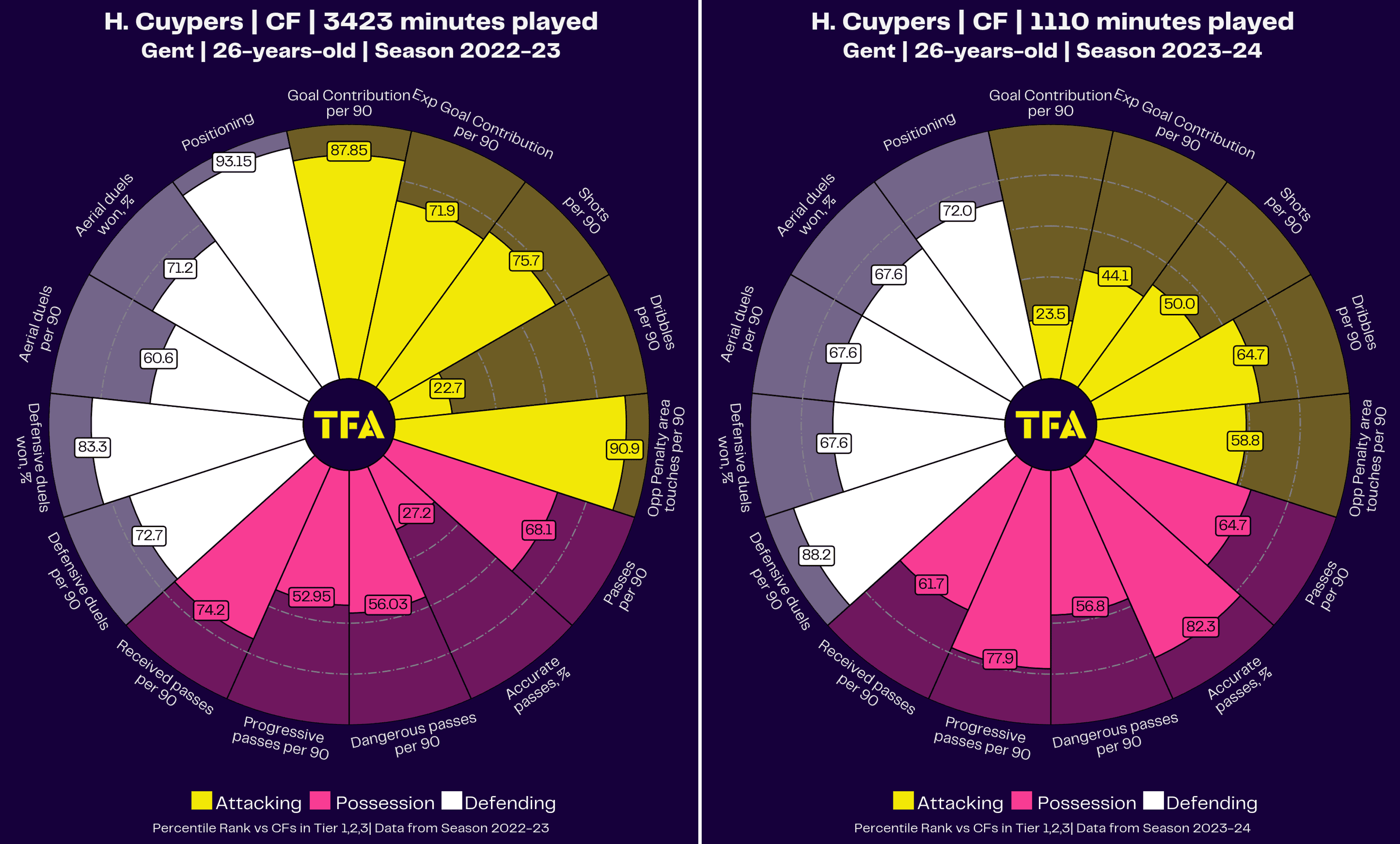
The second option we are putting forward, thanks to XGOLD, is Belgian 26-year-old forward Hugo Cuypers. The Genk forward does not bring the same height or aerial dominance as Kleindienst but offers a stronger contribution in other areas of the game while still getting an aerial and physical talent. Currently valued at £11.2m, there may be a question where United would make the risky decision to sign this striker for £10-15m, but he would certainly add a clinical element to the attack.
The base player we highlighted for the defensive midfield position was Anton Stach, a German midfielder who plays for Hoffenheim. While he fits the bill due to his high percentile rankings for several defensive areas and offers the highest interception rate of any midfielder in Europe’s top five leagues so far this season, he only joined Hoffenheim from Mainz in the summer, so it would be unrealistic to suggest him as a potential signing. As mentioned, though, he has been used as the base player, meaning we have asked XGOLD to suggest players similar to Stach in the hope of finding a similar defensive rock.
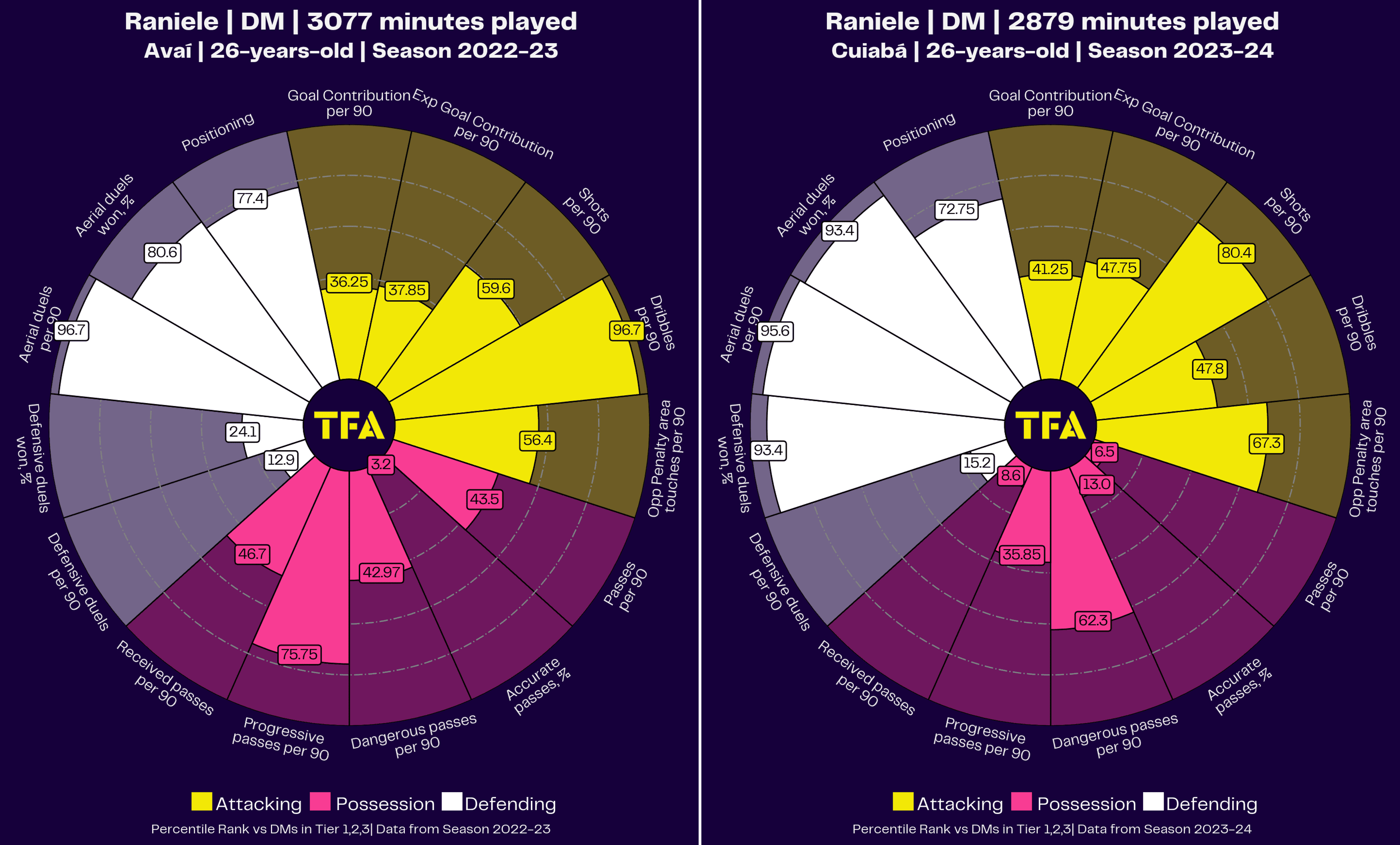
The first option to present is Brazilian player Raniele. As you can see, he is consistently effective in the air as well as making an impact in areas like interceptions, and it appears he had a slight change in role at his new club this season in Cuiaba, judging by his success rates in defensive duels. His stats last season also indicate an attacking contribution in the form of dribbling which could become an essential of Sheffield United’s tactics – the deep midfield driving into more advanced areas. While he has recently moved clubs, the circumstances here differ from that of Stach, who is currently thriving in the Bundesliga – Raniele would likely jump at the chance to play in Europe, and with a value of just £1.3m currently, he could be a steal.
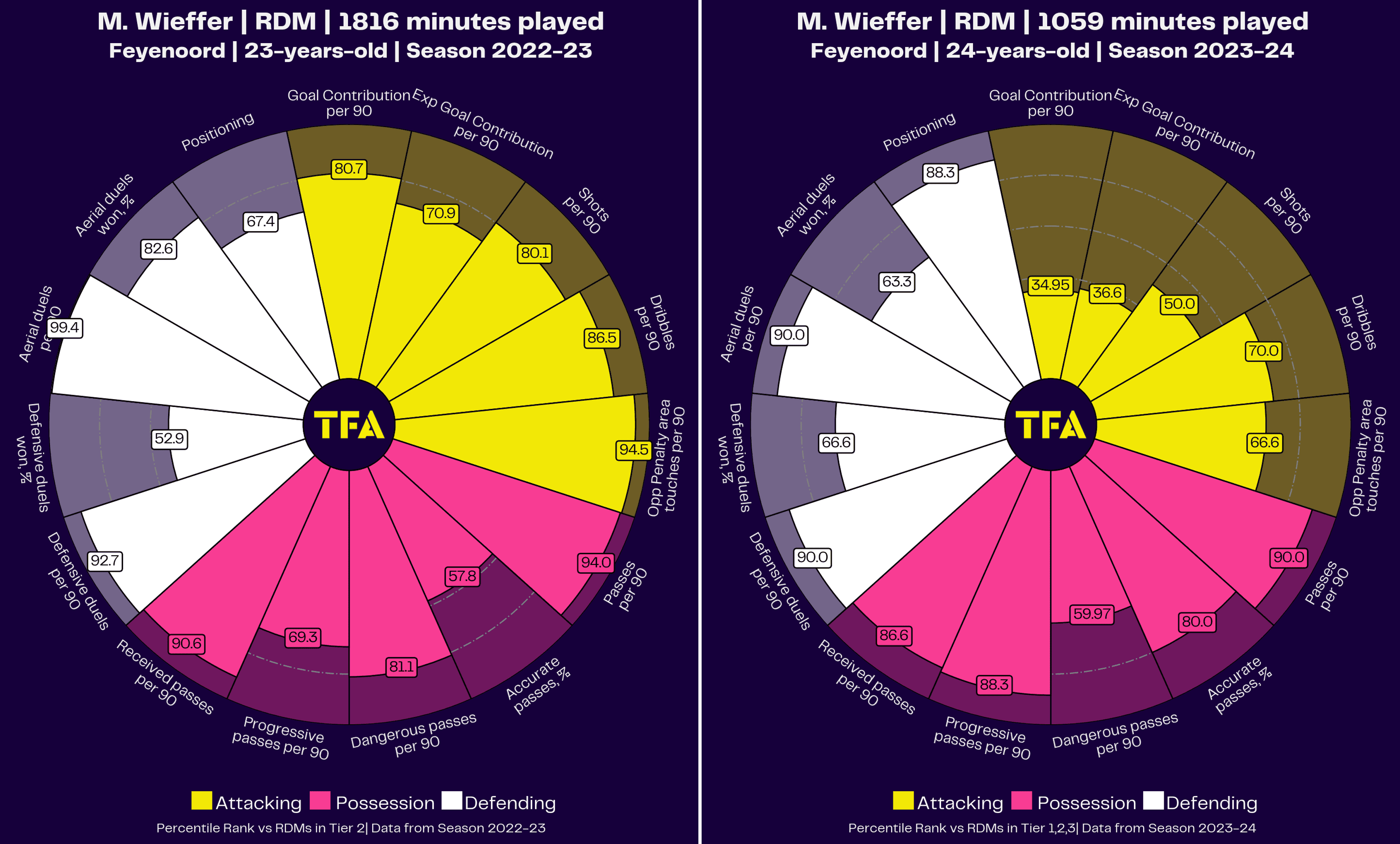
Our final target suggestion is Dutch midfielder Mats Wieffer, a more expensive option, currently valued at £15.5m. The Feyenoord man has been a vital cog in their midfield machine for a while now and offers consistent results in multiple areas of the game, most importantly, in defensive engagement & success, which is what we’re looking for. Wieffer would definitely be a coup for the Blades fout if the EPL comes knocking. Could he resist?
Conclusion
Wilder has plenty of work to do, but he will be keen not to overcomplicate things and will look to bring the confidence back to the Sheffield United squad first. He will be aware of their problem areas and strengths while also knowing who will be more likely to be effective for his team this season. Wilder will also likely want to dip into the market next month, and only time will tell just how much the board will back him in their bid to remain in the Premier League.

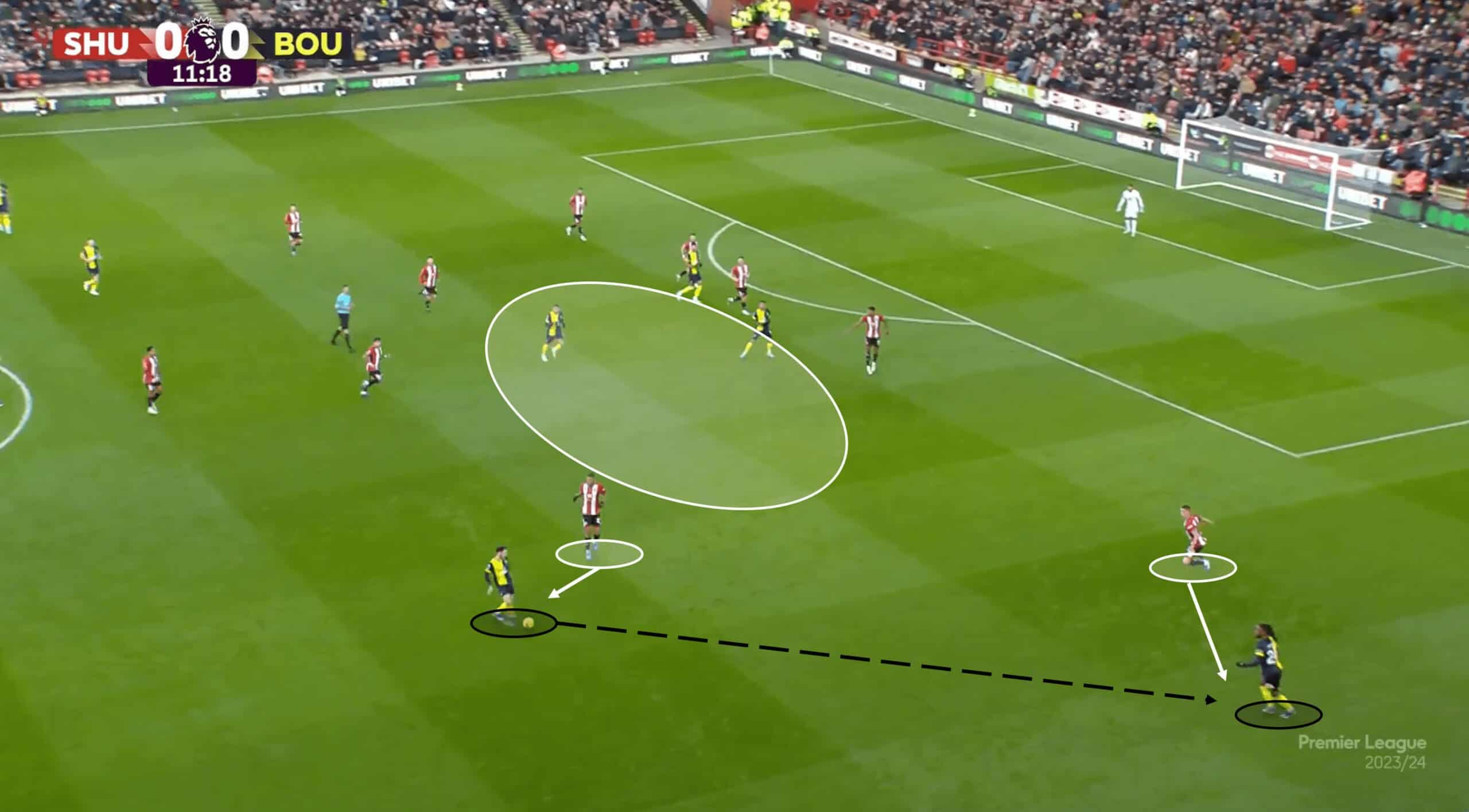




Comments